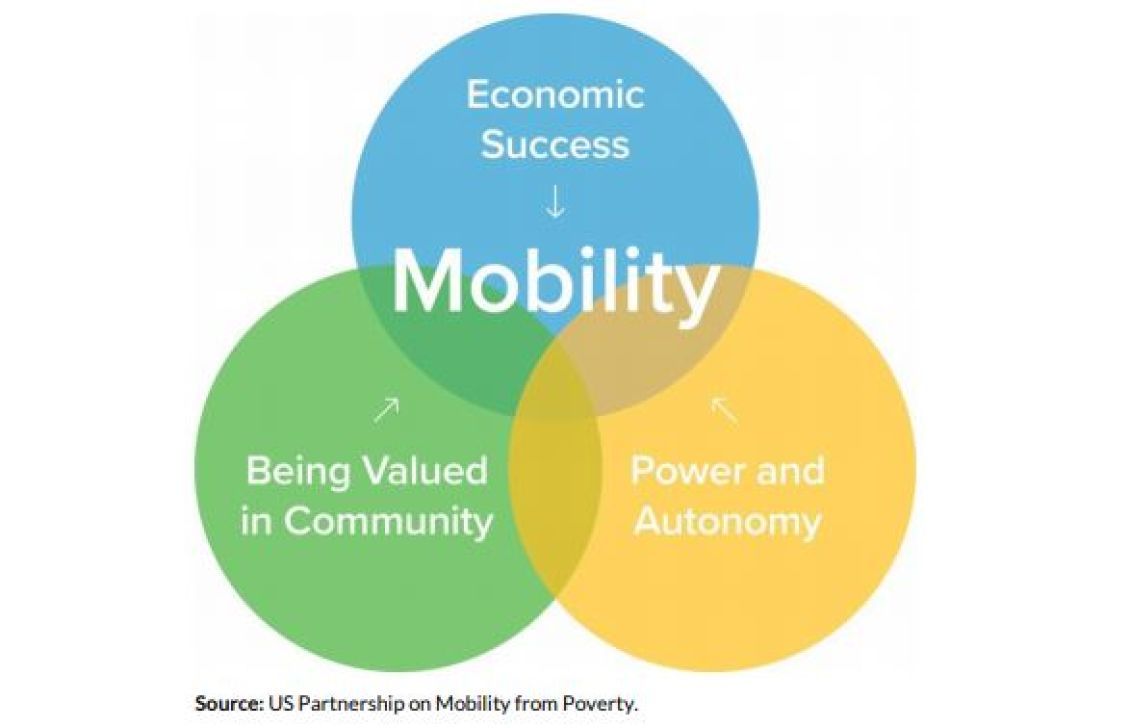Today, the Urban Institute released a research report, Economic Mobility Services for Affordable Housing Residents: Exploring Resident Services as a Vehicle for Economic Success. With support from the J. Ronald Terwilliger Foundation, the research was conducted as part of Enterprise’s emerging economic mobility initiative.
Why Economic Mobility?
Why are we focusing increasingly on economic mobility? Because, at our core, this is what Enterprise is about. Since our founding in 1982, we have invested over $36 billion in communities across the country to build hundreds of thousands of healthy, well-designed affordable homes and critical community assets like medical clinics, charter schools and healthy food stores.
But to what end? Our vision is that “one day every person will have an affordable home in a vibrant community, filled with promise and the opportunity for a good life.” While we believe that housing stability and security is essential, we know that it is not enough. We seek to make housing a platform to economic mobility so that children born in low-income families are able to move out of poverty, and adults experiencing poverty do so only for a period of time and have the ability to become more economically successful and secure.
Unfortunately, the forces that contribute to rising income inequality and uneven economic growth have also left communities around the country, particularly communities of color, with limited pathways to opportunity and success. Research shows that 70 percent of Americans born in the lowest income quintile will never reach the middle class, and African American households are more likely than their white peers to experience downward mobility. Further, more than 11 million renters spend at least 50 percent of their income on housing costs. The share of black households that pay this amount is nearly twice the share of white households.
What are the gaps this work seeks to fill?
While there are numerous efforts to address housing challenges and improve communities, data reveals that existing programs largely fail to help people move out of poverty at a large scale. To address these trends, we need to shed light on the policies and practices in our own sector that may be promoting or impeding economic mobility and intentionally nurture the promising practices through expansion, replication and collaboration.
This work is in no way race neutral. We know that many discriminatory policies – including in housing policy – and systemically biased practices have produced, and continue to produce, the disparities in income and wealth that we see today. We must build networks with the intention of addressing economic security and mobility in the communities of color impacted by this racial history. Enterprise sees this effort as part of our commitment to racial equity in the housing and community development fields.
We are beginning this work with an exploration of efforts linking housing and economic mobility interventions. There is a decently large field of practice that combines housing with supportive service delivery. While evaluations of some supportive service programs exist, and research on resident services in the health and education domains is emerging, few research studies have drawn lessons and insights from across programs and domains in the resident services field as it relates to economic mobility.
We partnered with researchers at the Urban Institute to do a scan of the field, explore various program models in depth, and identify practices that show promise in improving economic mobility outcomes.
What did we learn?
Economic Mobility Services for Affordable Housing Residents identified four promising practices that housing providers and/or service providers working with affordable housing can employ to promote economic mobility among residents:
- Pay residents for training and work
- Integrate property management and resident services
- Individualize services and supports to match residents’ goals
- Extend the time frame for services and supports
These are important findings about actionable strategies that can and should be put into practice, where possible. Perhaps equally illuminating, though, is what was not found in the research. For example, it was difficult to identify housing-based interventions explicitly targeting economic mobility outcomes. And those interventions that did, focused largely on interim measures toward economic mobility, and very little on factors like power and agency that impact peoples’ ability to actually move out of poverty permanently.
It is unlikely that housing providers, even the most well-intentioned, will be able to address this issue in isolation, given the significant structural barriers to mobility that exist for low-income communities, particularly communities of color.
As stated in the report:
Regardless of how services are delivered, even the highest-quality programs cannot move the needle on economic mobility without changes across multiple systems that expand opportunities for residents.
We intend for these findings to both inform our own work at Enterprise, but also to help other housing providers, social service organizations, employers, community-based organizations and local governments think about how to work together to create durable pathways out of poverty.
